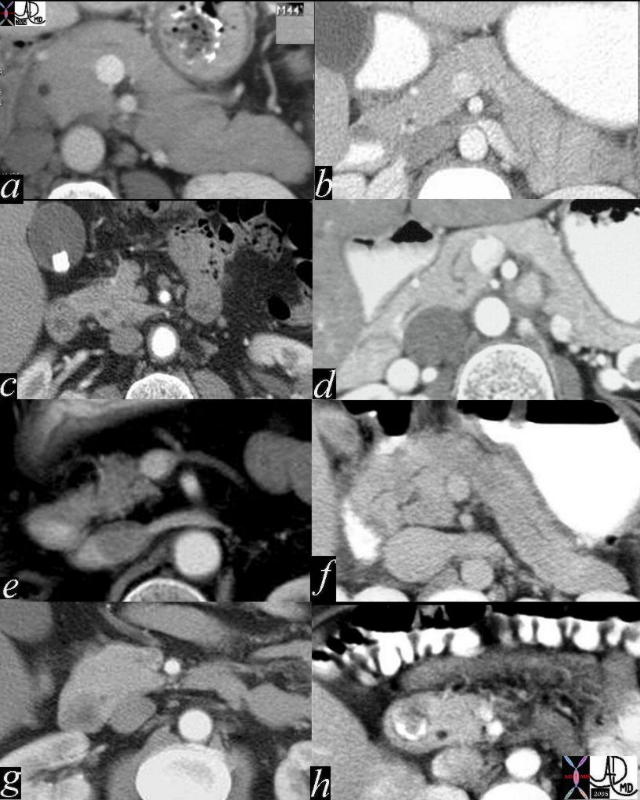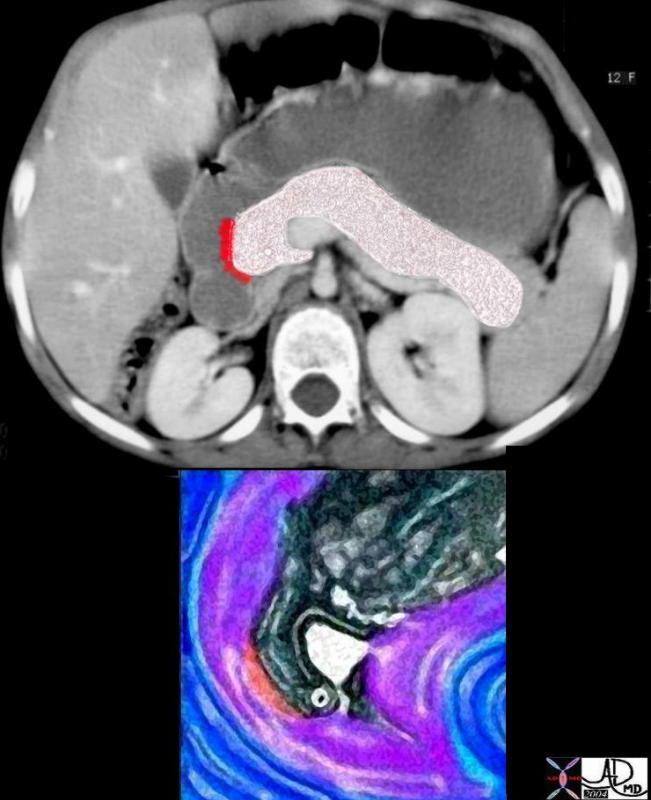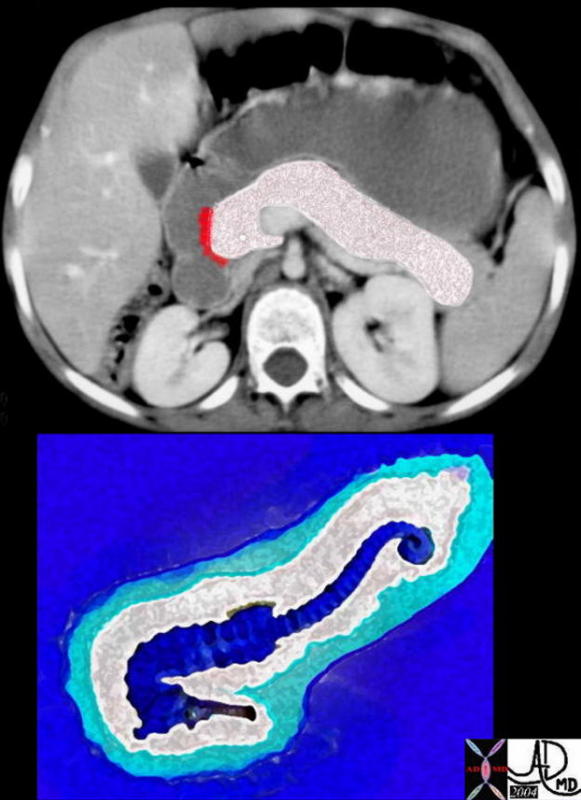|
Copyright 2007 There are many instances of hook shaped structures in the body, the most famous of which is the uncinate process of the pancreas. It is the medial extent of the head and true to the origin of the word, is hook shaped – In latin – uncus means “hook”. It shares its latin origins and shape origins with at least six other structures in the body. In the brain the uncus is the anterior extremity of the hippocampal gyrus. The ethmoid bone has an uncinate process which is a a inferiorly and posteriorly directed process of each lateral mass of the ethmoid bone that articulates with the inferior nasal conchae. There is an uncinate process of the cervical vertebra which is a hooklike projection found on each side of the superior surface of the five lower cervical vertebral bodies that extends superiorly and form one of the components of the uncovertebral joint. The coracoid process of the scapula is also called the ungiform process because of its curved shape. There is a a hooklike uncinate process on the volar surface of the hamate bone, which acts as an attachment point for many structures. Lastly there is an ungual process of third phalanx of foot. Introduction
From the posterior aspect of the head, a hook shaped structure appropriately called the uncinate process curls posteriorly. It is beaked shaped with biconcave anterior and posterior borders. It is of variable size, and extends to the left to occupy the space between the SMV and SMA anteriorly, and the the third and fourth part of the duodenum posteriorly. The uncinate process also lies anterior to the inferior vena cava and aorta.
In this CT scan of the abdomen the head and uncinate process are well seen curling around the SMV medially and abutting the duodenum laterally and posteriorly. Both the CBD and pancreatic duct are seen in the head. The shape is reminiscent of a birds head. Note the biconcavity of the beak. 26612 Courtesy Ashley Davidoff MD
The ventral remnant has a variable shape as it relates to theduodenu. It is mostly an inverted “c” and occupies about 1/3 to 1/4 of the circumference. (a-f). Sometimes it partially or totally surrounds the duodenum resulting in the entity of annular pancreas (h) 41505c02 Courtesy Ashley DAvidoff MD
The shape of the had of the pancreas, paticulalrly with inverted “c” component that is attached to the duodenum reminds one of the shape of a bird’s head – almost like a woodpecker’s head.
The shape of the had of the pancreas, paticulalrly with inverted “c” component that is attached to the duodenum reminds one of the shape of a bird’s head – almost like a woodpecker’s head. 39934b02 Courtesy Ashley Davidoff MD
At other times it looks more like the head of a seahorse.
At other times the head of thepancreas looks almost like the the head of a seahorse. 39934b03 Courtesy Ashley Davidoff MD |




